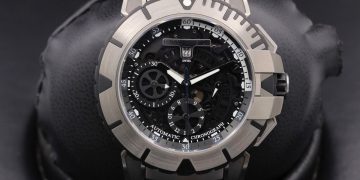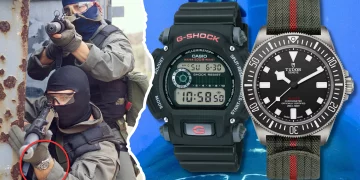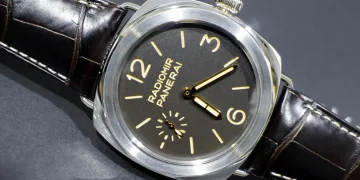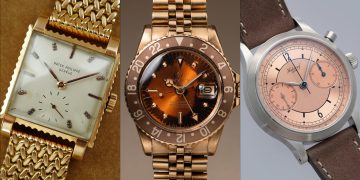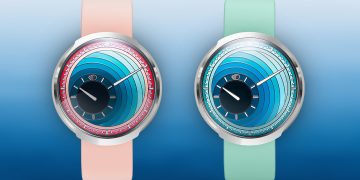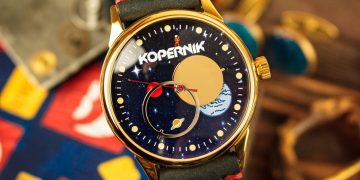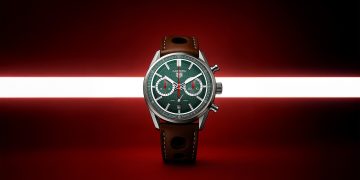The Omega Speedmaster is not merely a watch; it is an enduring symbol of human achievement, precision engineering, and timeless design. As the first watch to be worn on the moon, the Speedmaster has etched its place into the annals of horological history. But what makes the Omega Speedmaster so special, and how did this timepiece rise to such iconic status? In this comprehensive article, we will explore the brand behind the Speedmaster, its history, technological innovations, and the cultural impact it has had over the years.
From its introduction in 1957 to its legendary association with space exploration, the Speedmaster has become synonymous with adventure, craftsmanship, and reliability. But the story of the Speedmaster goes far beyond its status as the “Moonwatch”—it is a tale of bold innovation, collaboration, and the constant pursuit of perfection.
Join us as we delve deep into the Omega Speedmaster’s origins, evolution, and lasting legacy, uncovering the factors that have shaped its remarkable journey and contributed to its place as one of the most beloved and collectible timepieces in the world.
The Birth of the Omega Speedmaster: Origins and Early Years
The Omega Speedmaster was introduced in 1957 as part of Omega’s Professional series, a collection designed for professionals working in demanding fields such as aviation, motorsport, and space exploration. Omega, established in 1848 by Louis Brandt in Switzerland, had already earned a reputation for producing high-quality timepieces long before the Speedmaster’s debut. However, it was the introduction of the Speedmaster that would solidify the brand’s place in the world of horology and engineering.
The Speedmaster’s initial design was driven by the demand for a reliable chronograph—a watch that could function as both a regular timepiece and a stopwatch. At the time, Omega was looking to appeal to the growing interest in precision timing for motorsports, where accurate timing was essential for race car drivers. The Speedmaster was designed to meet this need, and it featured a tachymeter bezel, which allowed drivers to calculate speed over a fixed distance.
Key Design Features of the Early Speedmaster
The first Speedmaster, reference CK 2915, featured several key design elements that would become synonymous with the model’s identity. These features included:
- A tachymeter bezel: The Speedmaster’s tachymeter scale, used to measure speed based on elapsed time, was one of the defining characteristics of the watch. This design allowed for better functionality for professionals who needed precise measurements.
- A black dial: The bold, easy-to-read black dial with white markings became a signature look for the Speedmaster. It was designed for optimal readability in all conditions, an important factor for anyone using the watch for precise timing.
- The Caliber 321 movement: Omega equipped the first Speedmaster with its manual-winding chronograph movement, the Caliber 321. This movement, based on the Lemania 2310, was known for its accuracy, reliability, and robust construction. The Caliber 321 would continue to power the Speedmaster for years, becoming a hallmark of the brand’s commitment to precision.
From the start, the Speedmaster was built for performance, combining technical sophistication with an enduring design that has remained largely unchanged over the years.
The Omega Speedmaster’s Connection to Space Exploration
While the early Speedmaster models were primarily marketed to motorsport enthusiasts, it was the watch’s entry into the world of space exploration that would propel it to global fame. The story of the Omega Speedmaster and its connection to NASA is one of the most significant chapters in the brand’s history.
NASA’s Search for the Right Timepiece
In the early 1960s, NASA was looking for a reliable and durable chronograph to accompany astronauts on their missions. The space agency was conducting a rigorous selection process for the official timepiece that would be worn during space flights. Several brands and models were tested for their ability to withstand the extreme conditions of space travel, including high levels of G-forces, extreme temperatures, vacuum conditions, and vibration.
After a series of grueling tests, the Omega Speedmaster was selected as NASA’s official chronograph in 1965. This was a turning point in the history of the Speedmaster, marking the beginning of its association with space exploration. The Speedmaster passed all of NASA’s stringent tests with flying colors, proving itself as a reliable and durable tool for astronauts.
The Apollo 11 Mission and the “Moonwatch” Legacy
The Speedmaster’s greatest moment came in 1969, during the Apollo 11 mission, when astronauts Neil Armstrong and Buzz Aldrin became the first humans to land on the moon. Both astronauts wore Omega Speedmaster watches during the historic event, and the Speedmaster became the first watch to be worn on the lunar surface. This monumental achievement solidified the Speedmaster’s reputation and earned it the nickname “Moonwatch.”
While the role of the Speedmaster in the Apollo missions is well-documented, its contribution to the Apollo 13 mission is equally significant. During the ill-fated mission, the astronauts had to use their Speedmaster chronographs to time critical engine burns necessary to safely return to Earth after an explosion damaged their spacecraft. The precision of the Speedmaster was instrumental in helping the astronauts navigate the crisis and ultimately save their lives.
The Speedmaster’s Ongoing Space Legacy
The Omega Speedmaster continued to be part of every manned NASA mission after Apollo 11, including the Skylab space station and the Space Shuttle missions. Over time, the Speedmaster’s reputation as the ultimate tool watch for space exploration became cemented, and it remains the official watch of NASA’s astronauts to this day.
The legacy of the Speedmaster’s association with space exploration continues to resonate with collectors and enthusiasts around the world. Limited-edition models and commemorative releases, often inspired by Apollo missions or featuring design elements inspired by space exploration, are highly sought after by collectors, further cementing the watch’s connection to its lunar heritage.

The Evolution of the Omega Speedmaster: Design and Technological Advancements
Since its introduction, the Omega Speedmaster has undergone numerous updates and improvements. While the core design has remained relatively consistent, Omega has made several technological advancements to enhance the performance and accuracy of the Speedmaster, ensuring it remains at the forefront of horology.
The Transition from Caliber 321 to Caliber 861
In the 1960s and 1970s, Omega transitioned from the Caliber 321 movement to the Caliber 861 movement. The Caliber 861 was a modified version of the original movement, incorporating several improvements, including a more robust design and better resistance to shocks and wear. This change helped to make the Speedmaster even more reliable, particularly for professional use.
The Caliber 861, and later the Caliber 1861, would power many of the Speedmaster models that became highly coveted by collectors in the years to come. These movements were known for their durability and precision, and their popularity helped to solidify the Speedmaster’s reputation as a high-performance chronograph.
The Introduction of the Co-Axial Movement
In the early 2000s, Omega introduced its groundbreaking Co-Axial escapement technology, which significantly improved the accuracy and longevity of its movements. The Co-Axial escapement reduces friction between the escapement components, leading to improved timekeeping and reduced wear over time. The technology was a major innovation for the watch industry, and Omega was one of the first brands to incorporate it into its timepieces.
The introduction of the Co-Axial escapement in the Speedmaster helped to further elevate the model’s technical sophistication, making it even more desirable to watch enthusiasts. The Speedmaster’s Caliber 9300 and Caliber 3861 movements, which feature the Co-Axial escapement, offer increased accuracy and reliability while maintaining the watch’s iconic aesthetic and functionality.
Speedmaster Models and Limited Editions
The Omega Speedmaster has seen a number of models and limited editions over the years, each with unique features and designs that reflect the different eras in the Speedmaster’s evolution. From the original CK 2915 to the more recent Speedmaster Professional “Moonwatch,” Omega has consistently produced models that appeal to both professional users and collectors.
Some notable limited editions include:
- The Speedmaster Professional “Silver Snoopy Award”: This model, released in 2003, was created to commemorate the Apollo 13 mission and the Silver Snoopy Award that Omega received from NASA in recognition of the company’s contributions to space exploration. The watch features a unique dial with a depiction of Snoopy and is highly sought after by collectors.
- The Omega Speedmaster “Apollo 11 50th Anniversary”: Released in 2019, this special edition model celebrates the 50th anniversary of the Apollo 11 moon landing. It features a redesigned case and dial, as well as a unique “moonshine” gold case, making it a standout among modern Speedmaster releases.
- The Speedmaster “Snoopy 50th Anniversary”: Another nod to the beloved Apollo 13 mission and the Silver Snoopy Award, this model celebrates 50 years of the Apollo 13 mission and features a unique caseback design that includes a depiction of Snoopy in space.
Each limited edition and special release adds a new layer to the Speedmaster’s rich history, offering collectors a chance to own a piece of the watch’s storied legacy.
The Cultural Impact of the Omega Speedmaster
While the Omega Speedmaster’s association with space exploration has undoubtedly been its most significant cultural impact, the watch has also influenced a variety of other fields, including motorsport, fashion, and popular culture.
The Speedmaster in Motorsports
The Speedmaster was designed with motorsports in mind, and its tachymeter scale made it a natural choice for race car drivers and enthusiasts. Over the years, Omega has continued to celebrate its connection to motorsports by releasing special edition Speedmaster models, often featuring design elements inspired by racing cars and drivers.
The Speedmaster in Fashion and Popular Culture
The Omega Speedmaster’s clean, versatile design has also made it a popular choice in the world of fashion. The watch has been worn by numerous celebrities, actors, and designers, and it is often featured in films, advertisements, and media outlets. Its association with space exploration and adventure, combined with its sleek, understated design, has made the Speedmaster a sought-after accessory for those who appreciate both style and substance.
The Speedmaster’s enduring popularity in fashion and popular culture is a testament to its timeless design and appeal across different generations.
Conclusion: The Legacy of the Omega Speedmaster
The Omega Speedmaster is more than just a timepiece—it is an icon, a symbol of human achievement, and a testament to the precision and craftsmanship that Omega has built its brand on over the decades. From its humble beginnings as a chronograph designed for motorsports to its historic role in space exploration, the Speedmaster has become one of the most celebrated watches in history.
The Speedmaster’s combination of technical innovation, rugged design, and cultural significance has ensured its place as a beloved timepiece among collectors, professionals, and enthusiasts. As Omega continues to push the boundaries of watchmaking, the Speedmaster will undoubtedly remain at the forefront of the brand’s legacy, embodying the spirit of adventure and excellence that has defined Omega for more than 170 years.
With its rich history, enduring design, and remarkable technological advancements, the Omega Speedmaster remains a true testament to the art of watchmaking. Whether worn as a functional tool or as a piece of horological history, the Speedmaster continues to inspire generations of watch lovers and adventurers alike.



